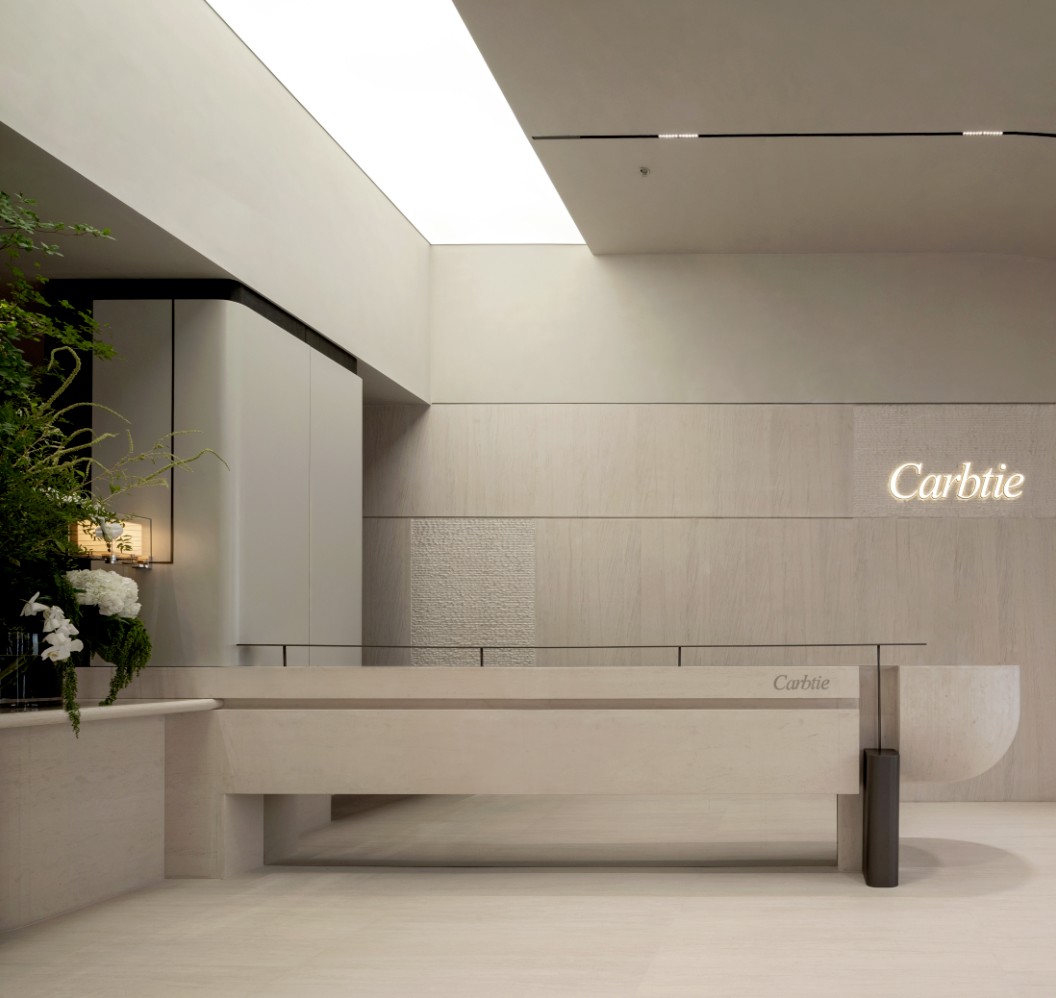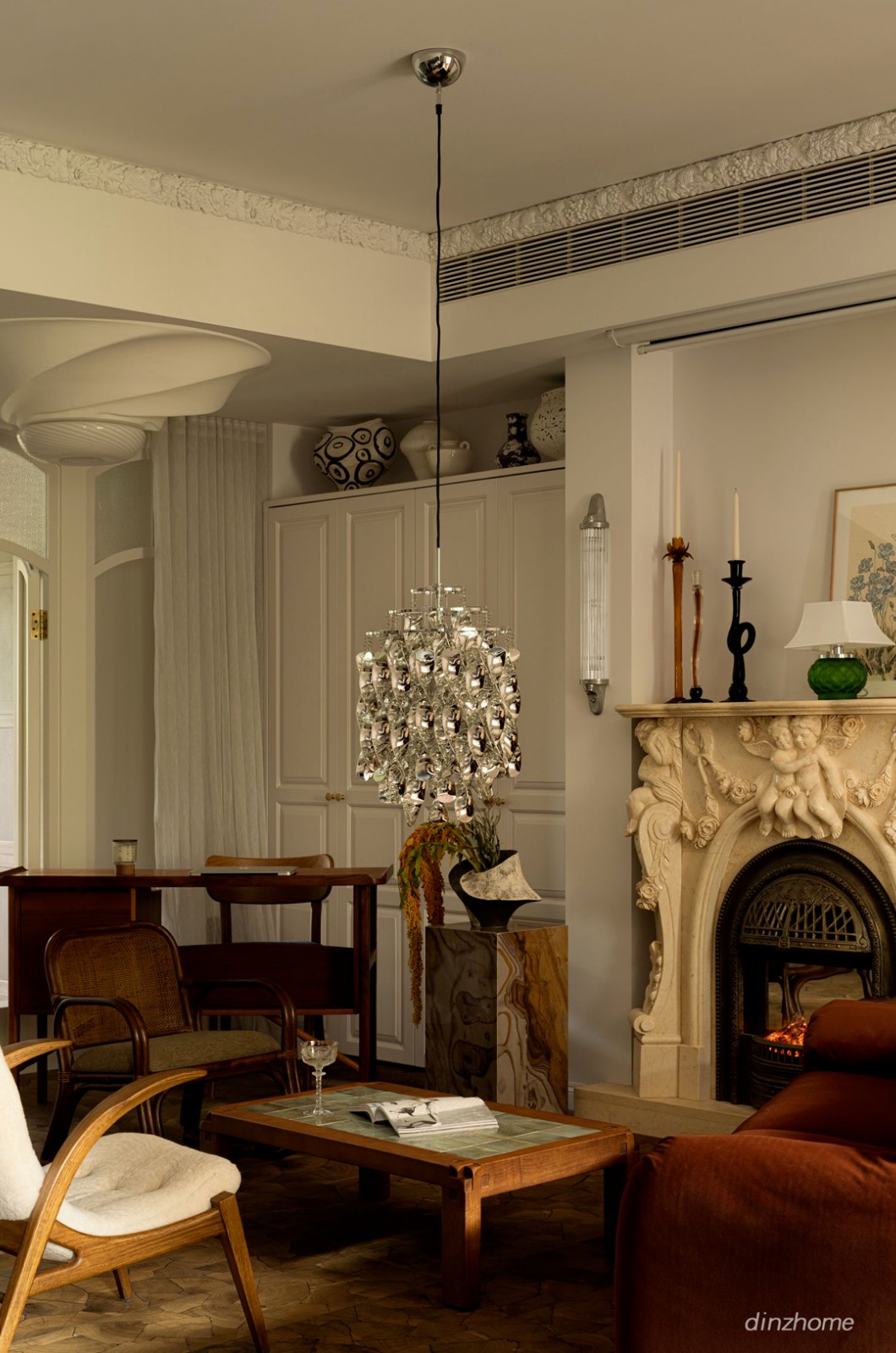Cantzheim Vineyard Manor House Max Dudler
2017-08-11 00:00
© Stefan Müller
斯特凡·穆勒


“古特肖坎茨海姆”是一座已故的巴洛克庄园,在特里尔附近的德国坎齐姆镇,葡萄园的背景令人叹为观止。最近,马克斯·达德勒对这座房子进行了翻新和现代化改造,同时也遵守了历史保护建筑的准则。他的目标是恢复建筑和它所居住的景观之间的非凡联系。
"Gutshaus Cantzheim" is a late Baroque manor set before a stunning backdrop of vineyards in the town of Kanzem, Germany, near Trier. The house was recently renovated and modernized by Max Dudler while simultaneously respecting the guidelines for historically protected buildings. His goal was to revive the extraordinary connection between the architecture and the landscape it inhabits.
© Stefan Müller
斯特凡·穆勒


Site Plan and Elevation
立地平面图及立面


© Stefan Müller
斯特凡·穆勒


两座新的辅助建筑也在相互尊重的距离上建立起来,突出了庄园住宅的孤独尊严。伯恩哈德·科特低调的景观设计进一步阐明了整体合奏与其风景如画的环境之间的和谐。
Two new auxiliary buildings have also been erected at a respectful distance, accentuating the solitary dignity of the manor house. Bernhard Korte’s understated landscape design further articulates the harmony between the overall ensemble and its picturesque surroundings.
© Stefan Müller
斯特凡·穆勒


这一令人骄傲的历史可以追溯到1740年,当时它是普罗孟斯普林斯的瓦德加森修道院(PremonStratensian Wadgassen Abbey)葡萄酒种植庄园的一部分。在后来的几年里,它花了很长一段时间在特里尔的圣公会神学院手中。然而,最终,正是房地产的内在美,使其现有所有者在2007年购买了它。
The proud history of the property dates to 1740, when it formed part of the former wine growing estate of the Premonstratensian Wadgassen Abbey. It spent a long period in later years in the hands of the Episcopal Seminary of Trier. Yet in the end, it was the intrinsic beauty of the estate that moved its current owner to purchase it in 2007.
© Stefan Müller
斯特凡·穆勒


修复和开发工作的主要重点是强调已故巴洛克庄园的独特性质,并将令人印象深刻的背景-坎泽默阿尔滕贝格葡萄园(Kanzemer Altenberg)-以及一排排明显分开的葡萄园-描绘成观察者对庄园的总体印象。
The restoration and development were primarily focused on accentuating the distinctive nature of the late Baroque manor house and drawing the impressive backdrop – the sweeping Kanzemer Altenberg vineyards, with their clearly divided rows of vines – into an observer’s overall impression of the estate.
© Stefan Müller
斯特凡·穆勒


Manor House Plans and Sections
庄园屋宇图则及分区


© Stefan Müller
斯特凡·穆勒


庄园的巴洛克时代的部分被给予最高优先,并决定删除以后的补充。房子内部的翻新计划要求原有结构保持原样,但房间将现代化,供当代使用。为了容纳庄园的技术基础设施,重建了客车屋,消除了不必要地削减巴洛克建筑材料的必要。
The manor's Baroque-era sections were accorded top priority and the decision was made to remove later additions. The renovation plans for the interior of the house dictated that the original structure is left intact, but the rooms would be modernized for contemporary use. The coach house was rebuilt to house the manor's technical infrastructure, eliminating the need to cut unnecessarily into the Baroque building materials.
© Stefan Müller
斯特凡·穆勒


新的建筑物、马车房和橘子房都建在离主楼一段距离的地方,但却与主楼站在一条轴线上。当从远处看合奏时,排列解除了庄园的戏剧性张力,并向整个扩展的巴洛克属性传达了一种连续性的感觉。总体构成和建设面向周边景观。
The new buildings, coach house, and orangery were all built at a distance from the main house, yet stand on a single axis with it. When regarding the ensemble from a distance, the alignment relieves the manor house of its dramatic tension and conveys a sense of continuity to the entire extended Baroque property. The overall composition and construction are oriented toward the landscape around it.
Remise Plans and Sections
出让图则及分段


这座两层高的客车屋的墙壁,包括它的屋顶,都是用夯实的混凝土制成的.这种特殊的技术需要手工应用其许多混凝土层中的每一层,再现周围葡萄园的泥土色调。房子西侧的橘子是由钢和玻璃组成的,在某种程度上起到了对整体马车屋的抗衡作用。
The walls of the two-story coach house, including its roof, are produced from rammed concrete. This special technique requires the application of each of its many concrete layers by hand, reproducing the earthen tones of the surrounding vineyards. The orangery to the west of the house is composed of steel and glass and serves to some degree as a counterweight to the monolithic coach house.
© Stefan Müller
斯特凡·穆勒


这种通风的结构是由主导景观的一排排藤蔓的垂直性决定的。新建筑的轴向排列产生了不同时代和技术的惊人并置:萨亚尔古老的水域、作为当代运输形式的铺面道路、巴洛克庄园住宅和铁路线,作为对工业现代化的一种认可。
The airy structure picks up on the verticality of the rows of vines that dominate the landscape. The axial alignment of the new buildings produces a striking juxtaposition of different eras and technologies: the ancient waters of the Saar, the paved roads as a contemporary form of transportation, the Baroque manor house and the rail line as a nod to industrial modernity.
© Stefan Müller
斯特凡·穆勒


坐落在地平线上,他们形成了一个明确无误的全景,突出成功的翻修与惊人的紧迫感。该房产可以直接从Kanzem火车站进入,这一壮举是通过在车站的小前院周围购置一块地块而实现的。它曾经属于这个州的邻居,但现在它将巴洛克晚期庄园与其社区的所作所为联系起来。
Situated along the horizon, they form an unmistakable panorama that highlights the successful renovations with amazing urgency. The property can be accessed directly from the Kanzem train station, a feat made possible through the acquisition of a plot around the station’s small forecourt. It once belonged to the state's neighbor, but now ties the late Baroque manor back into the doings of its community.
© Stefan Müller
斯特凡·穆勒


自落成以来,该酒店已成为客房、酒窖、活动厅和私人住宅。优雅的室内设计与现有的基础设施相互尊重。在凸起的底层,空间进行了改造,包括一个带有两个餐厅的商业厨房;历史上拱形的地窖作为一个活动空间。
Since completion, the property has served as a guest house, wine cellar, event room and private residence. The elegant interior design stands in respectful harmony with the existing infrastructure. On the raised ground floor, space was modified to include a commercial kitchen with two dining rooms; the historic vaulted cellar serves as an event space.
© Stefan Müller
斯特凡·穆勒


楼上和阁楼被分成三间客房,以及一套有独立入口的私人公寓。另外两间客房位于客车楼的上层。位于巴洛克式建筑中心的一间房间,完全保留了它原来的特色:前一座教堂,由历史上的垂直光轴点亮,甚至现在也让它充满了对它以前的召唤的神圣回忆。
The upper floor and attic have been split into three guest rooms, as well as a private apartment with a separate entrance. Two additional guest rooms are located on the upper floor of the coach house. One room at the heart of the Baroque building has retained its original character in full: the former chapel, lit by historical vertical light shafts that even now imbue it with a sacral reminiscence of its former calling.
© Stefan Müller
斯特凡·穆勒






























































Architects Max Dudler
Location Kanzem, Germany
Project Manager Simone Boldrin
Team Katharina Laekamp, Kilian Teckemeier Julia Lapsin, Patrick Gründel
Area 1500.0 m2
Project Year 2016
Photographs Stefan Müller
Category Renovation
























